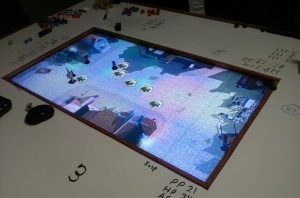
Technological advancements have played a significant role in shaping the world of gaming, and one of the key components that make modern games visually stunning and immersive is the Graphics Processing Unit (GPU). Over the years, GPU architecture has undergone remarkable transformations, moving from humble beginnings to the extraordinary capabilities we witness today. This article delves into the journey of gaming GPU architecture, highlighting the past, present, and a glimpse into the future of this vital gaming technology.
The Birth of GPU Architecture
In the early days of gaming, graphics were rendered by the Central Processing Unit (CPU). However, as gaming evolved and became more demanding, the need for a dedicated processor capable of handling complex graphics calculations became apparent. This gave birth to the concept of the Graphics Processing Unit, with the first GPUs being introduced in the late 1990s.
Early GPU architectures, such as the NVIDIA RIVA 128 and ATI Rage, laid the foundation for modern gaming graphics. These GPUs focused on providing enhanced 2D and 3D rendering capabilities, allowing gamers to experience better textures, lighting, and smoother performance in their games.
The Rise of Graphics Processing Power
As gaming technology progressed, so did the need for more powerful GPUs. This led to the evolution of GPU architectures like NVIDIA’s GeForce series and AMD’s Radeon series, which continually pushed the boundaries of graphics processing power.
The introduction of programmable shaders was a game-changer in GPU architecture. These shaders allowed developers to program specific visual effects, textures, and lighting, unlocking limitless possibilities in game design. With the release of DirectX 9.0 in 2002, GPUs gained even more capabilities, setting the stage for the intense graphics and realism that gamers now enjoy.
The Present: Ray Tracing and Real-Time Rendering
Today, gaming GPU architecture has reached unprecedented heights. One of the most significant advancements is the integration of hardware-accelerated ray tracing, a rendering technique that simulates the behavior of light in real-time, resulting in incredibly realistic lighting and shadows.
NVIDIA’s RTX series and AMD’s Radeon RX 6000 series are examples of modern GPUs that have dedicated hardware to support ray tracing. These GPUs mark a turning point in gaming visuals, as they enable developers to create breathtaking environments with accurate reflections, global illumination, and life-like shadows.
Real-time rendering has also seen significant improvements in recent years. GPUs now pack an enormous number of compute units and Tensor Cores, allowing for impressive performance in real-time rendering tasks like physics simulations, AI-driven characters, and complex visual effects. As a result, gamers can experience fluid gameplay and stunning visuals, immersing themselves in rich virtual worlds.
The Future: AI Integration and Virtual Reality (VR)
Looking ahead, the future of gaming GPU architecture holds even more exciting possibilities. Artificial Intelligence (AI) integration is set to play a pivotal role, with AI-assisted rendering techniques aiming to further enhance graphics performance and quality. By leveraging AI algorithms, GPUs can intelligently optimize rendering, reducing the workload and producing stunning visuals even on lower-spec hardware.
Virtual Reality (VR) is another area that will greatly benefit from future GPU advancements. As VR gaming continues to grow in popularity, GPU architecture will need to adapt to meet the demands of rendering high-resolution displays at high refresh rates. This will ensure a smooth, nausea-free experience for VR enthusiasts, with lifelike environments that blur the line between real and virtual.
Conclusion
The journey of gaming GPU architecture has been nothing short of extraordinary. From the early days of basic 2D rendering to the lifelike environments and real-time ray tracing we witness today, GPUs have continuously evolved to meet the demands of the gaming industry. With AI integration and VR on the horizon, the future of GPU architecture promises even more breathtaking gaming experiences. As technology marches forward, gamers can eagerly anticipate the incredible advancements that lie ahead, unlocking new dimensions of immersion and visual fidelity.


